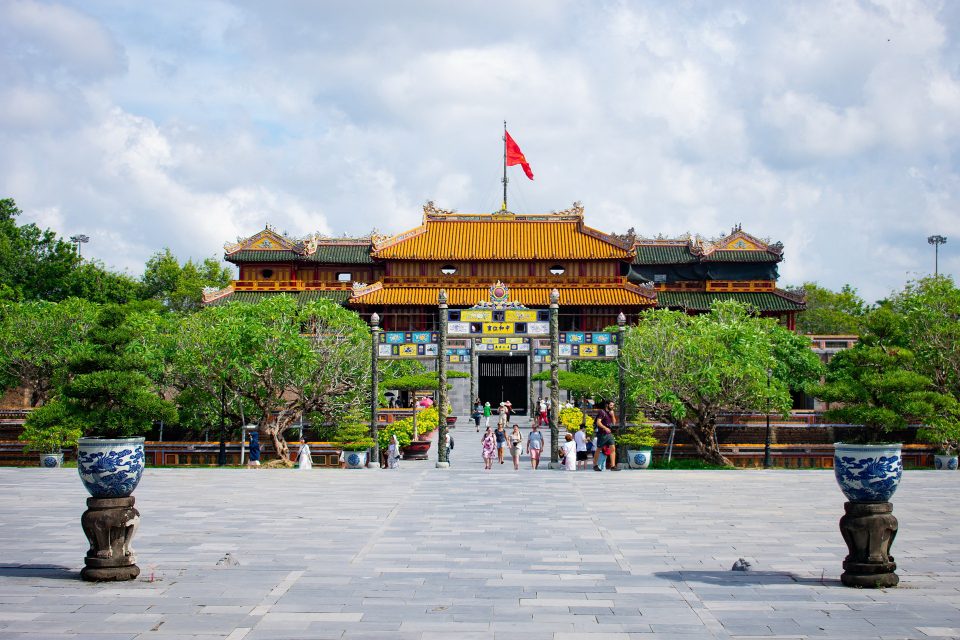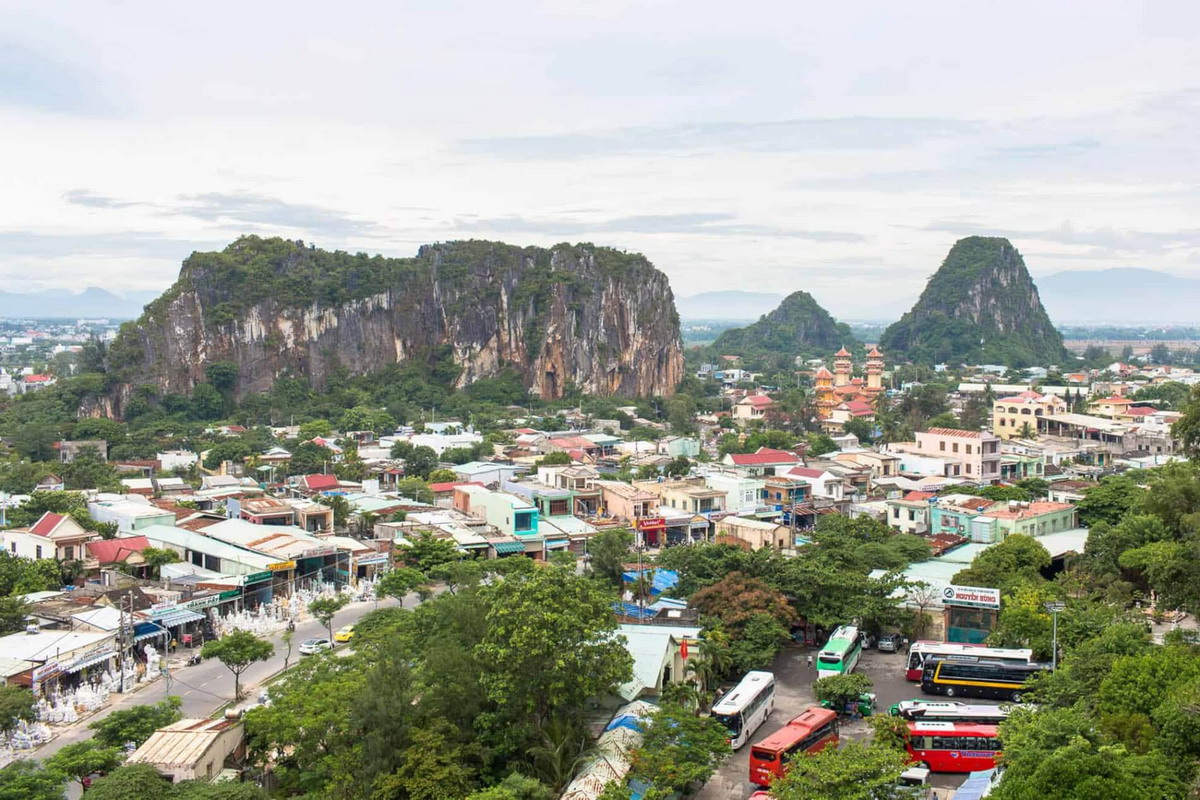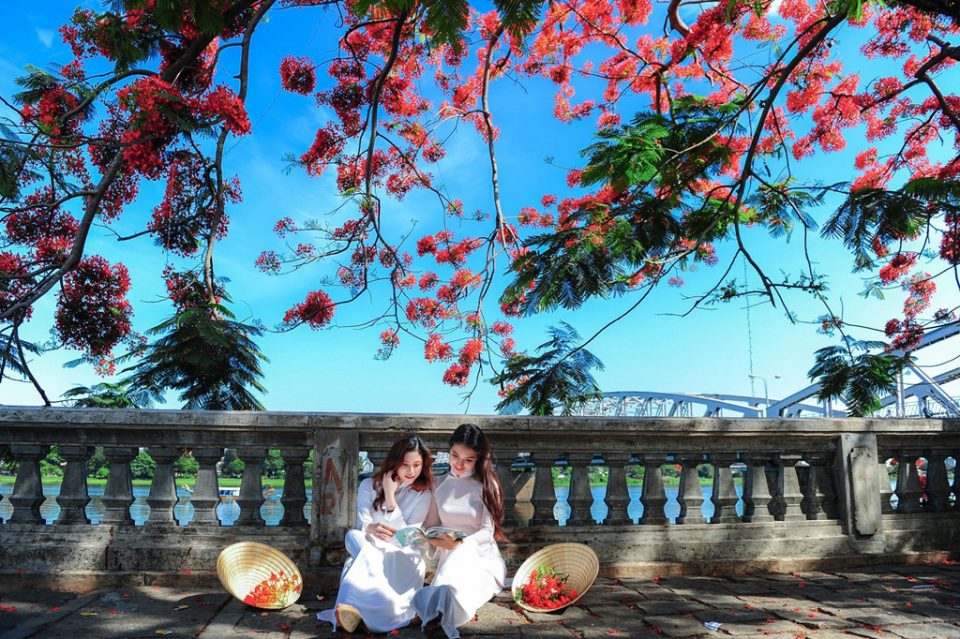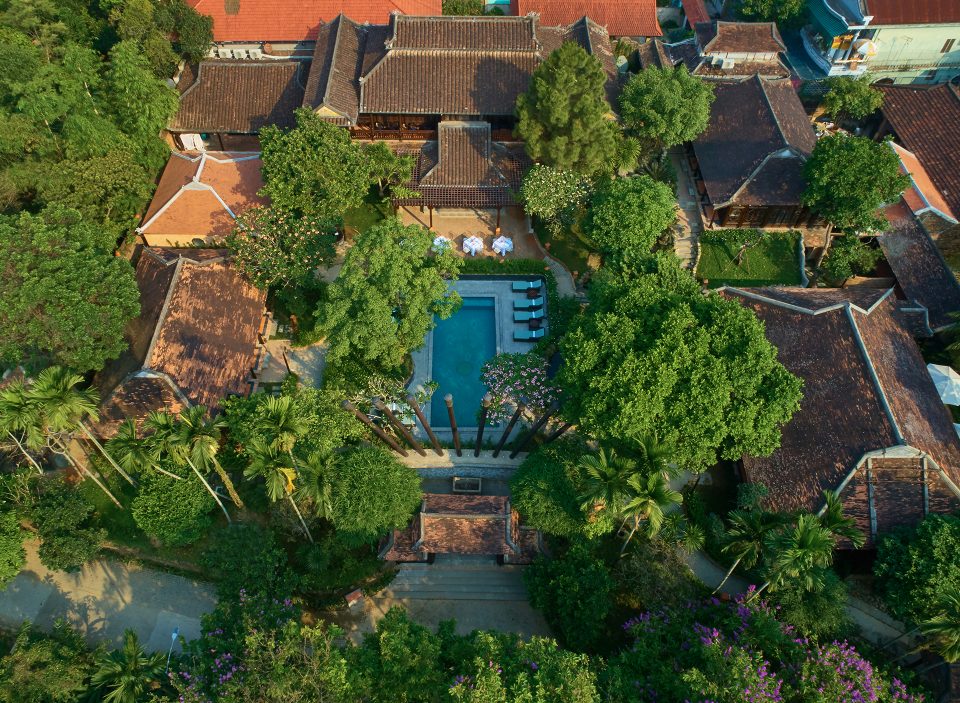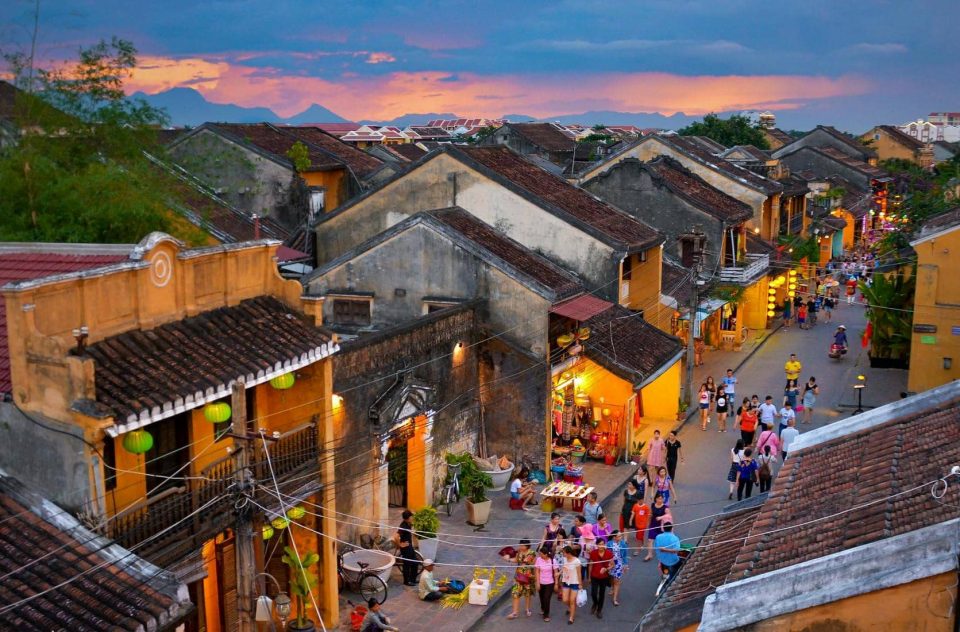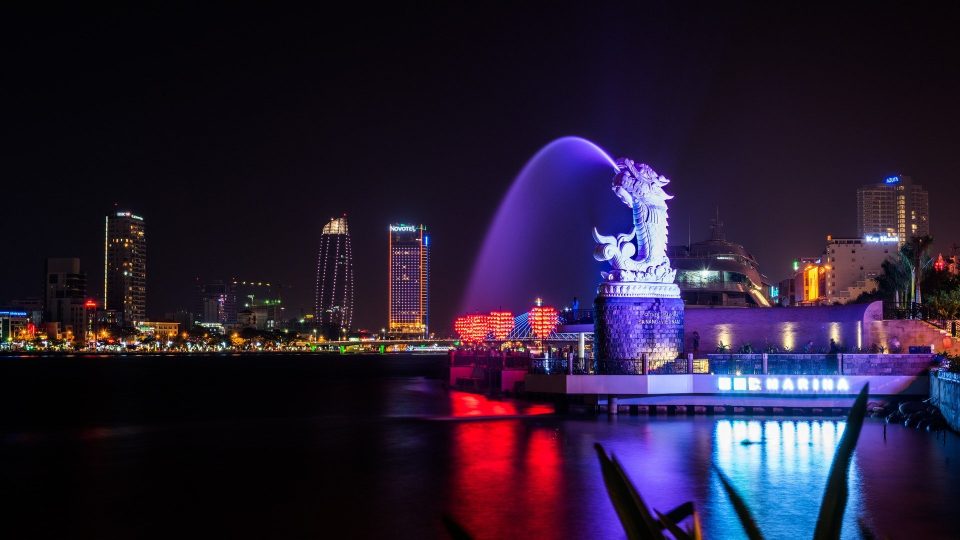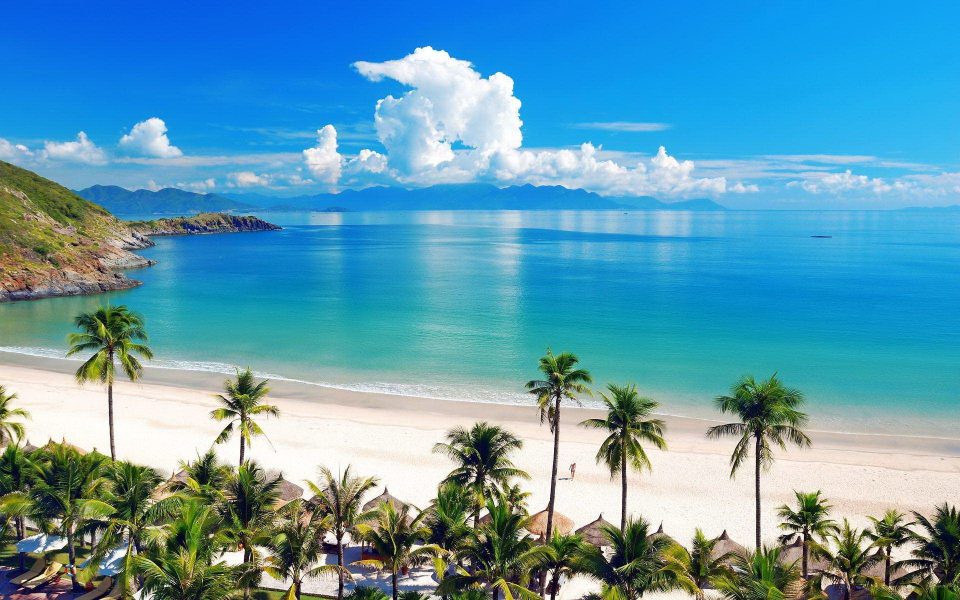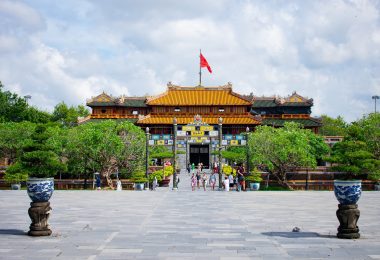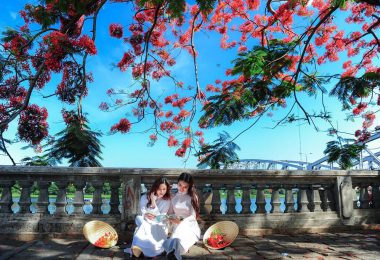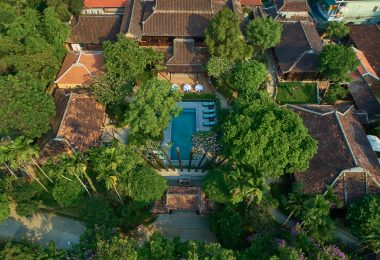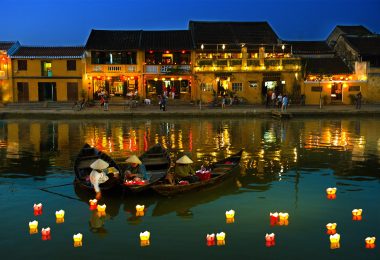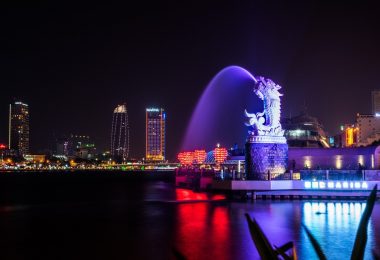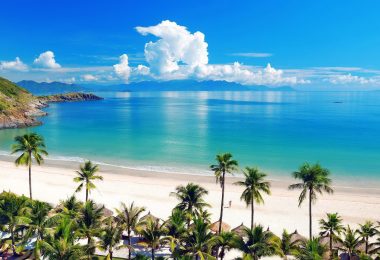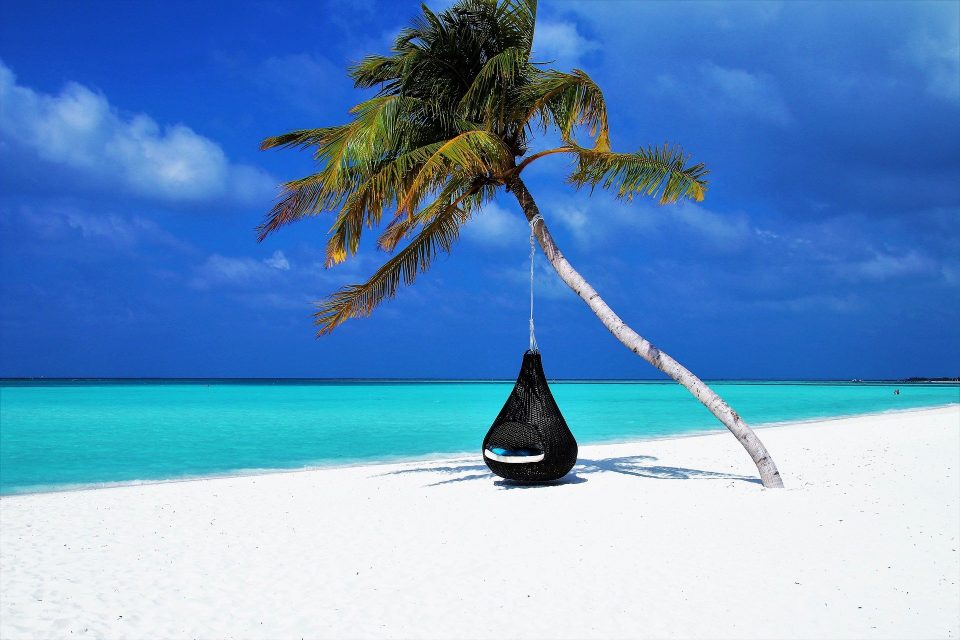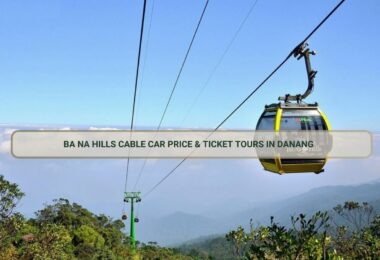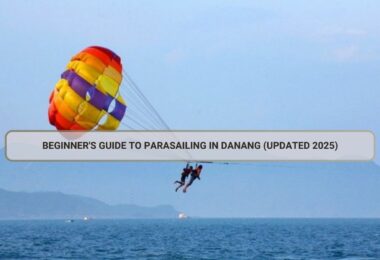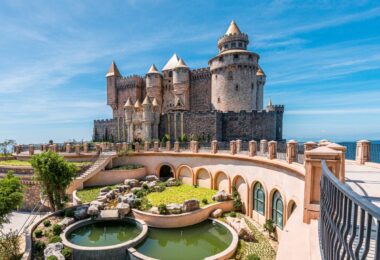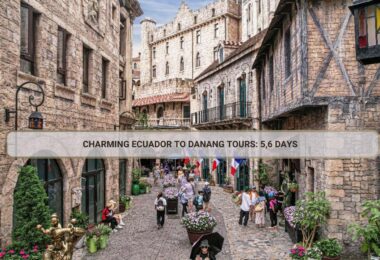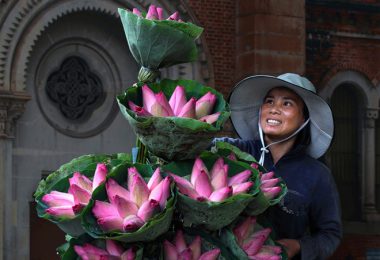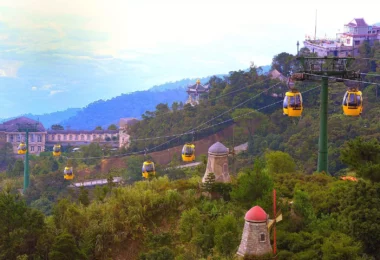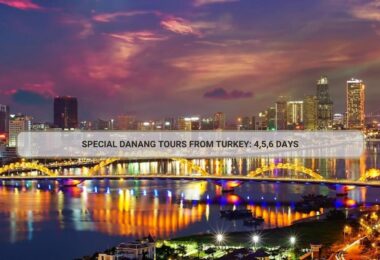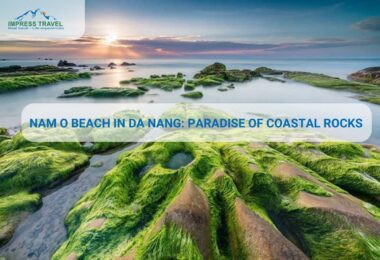Da Nang, known as a vibrant modern metropolis, is also home to a rich history and cultural tapestry. Da Nang has become an important destination in the historical discovery and modern leisure sector because of its beautiful beaches, verdant landscapes and culture-rich history. In many ways, the story of Da Nang -resilience, transformation, and synthesis – repeats some of the broader narratives of Viet Nam’s history. This blog lifts the lid on many key milestones, influences, and economic changes through time in which the city was trapped from ancient times until the present.
Historical Background
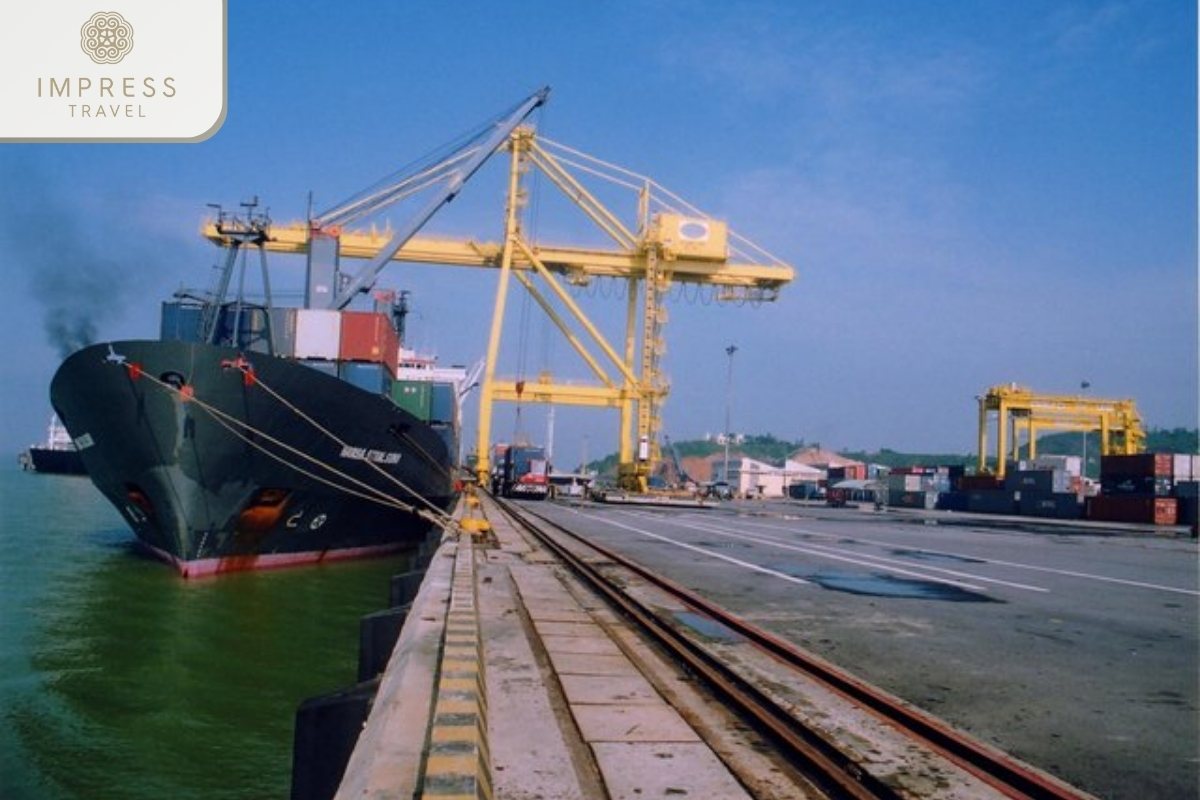
Da Nang Port in 1975
Early History
Da Nang is a city of historic trade links, three kilometers from the sea in central Vietnam less than five hundred kilometers from Ho Chi Minh City. Traces of human settlement take things back to the kingdom Of The Champa who ruled central And Southern Vietnam for almost 2,000 years to be close to the more exact and little known, cities like My Son about and twelve kilometers sample castle add proof Da Nang was shaping societies at least since roughly the 7th century times when construction began here all convent francs Opportunities Exist In san Francisco cost civilizations boomed second, minus early-system settled into non-hotel future declining after Kjurik sacking by early ripe period Click. Da Nang became known for the seagoing and trading abilities of its Champa people, allowing strategic commercial access to India, China and Southeast Asia. This time started the voyage of Da Nang an extraordinary social and monetary center.
From the temples and sculptures, it is clear that the Cham people derived much of their culture from India. In contemporary history, Da Nang was the site of the kingdom’s capital in the 9th century and was previously called “Indrapura" during the Champa era. You can still see the lasting remnants of this era in architectural wonders like the UNESCO World Heritage My Son Temple which is a testament to the artistic and religious exuberance of the Champa culture.
Colonial Era
The French ushered in an entirely new chapter of Da Nang’s history upon their arrival in the mid-19th century. Da Nang was the site of the first landing of French colonial forces in 1858, resulting in considerable changes. Once called Tourane, it was a principal seaport as well as the capital of French Indochina. It was during this period that Western architectural styles and urban planning were introduced by the local adaptations to translate into a distinctive colonial legacy.
The French built infrastructure, such as street railways and buildings, that we still see today in Da Nang. By 1845, the port of Tourane was busy handling trade connecting Vietnam with the wider world economy. This was despite the colonial repression, yet this period that likewise had the National Technological and Educational progressions that characterized the eventual fate of the city.
Vietnam War and Liberation
In the 20th century, Da Nang was the strategic location of some interest throughout history and might even have been one of the hotspots during the duration of the Vietnam War. Da Nang was to become the single biggest base for American and South Vietnamese forces during the war. It was also an important logistical center, with large air and naval bases. However, this simultaneously made it a target for major military action and bombing.
The definitive moment in the Da Nang story occurred on March 29, 1975, when the city was liberated by North Vietnamese forces. This was the beginning of the end of the Vietnam War and Vietnam reunified. The day of Da Nang liberation is a typical event of the people with its jubilant atmosphere throughout history; this is seen as a festival every year, which represents the personality, determination and community spirit not to give up.
Cultural and Social Evolution
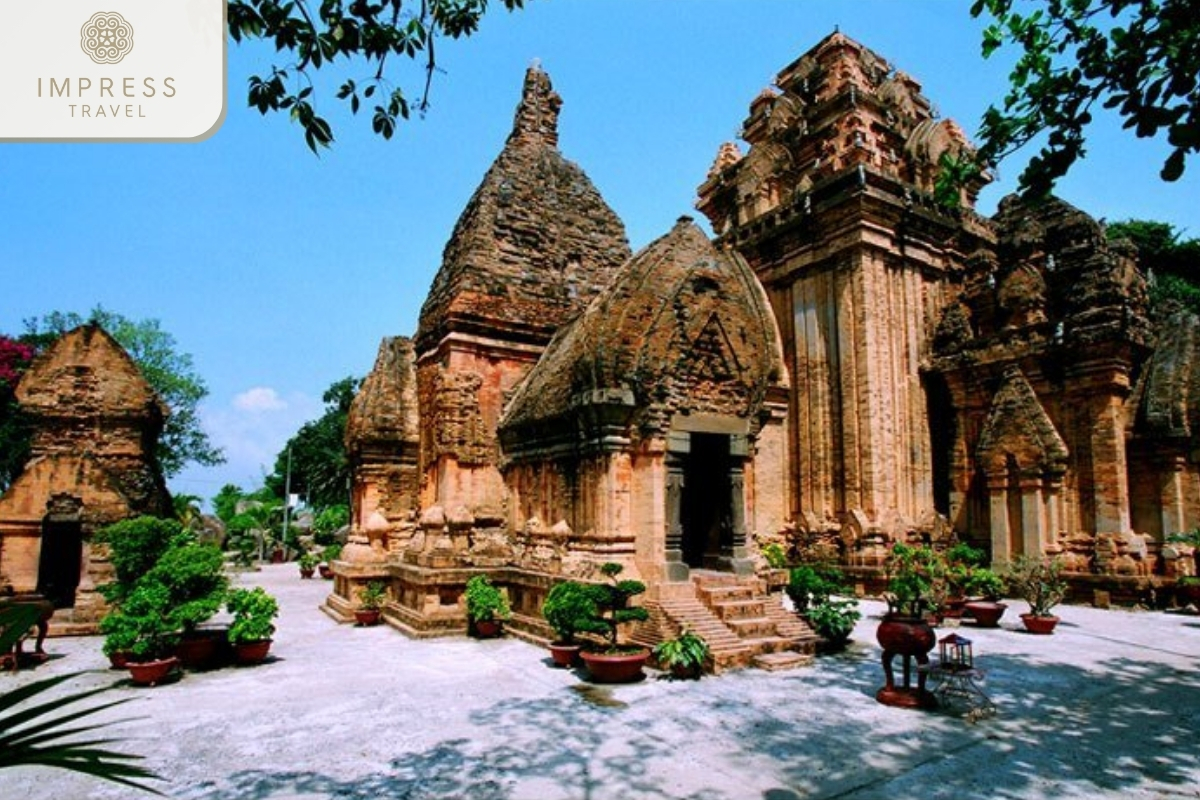
Cham Sculpture Museum
Influence of Champa Culture
The tapestry that is Da Nang includes colorful Champa threads. The temples of the My Son Sanctuary, now largely ignored by history but noted for their place in an elaborate ensemble of ruined temples and towers that speak to a vanished culture documented only by these remnants. The fine carvings and temple structures show its the heritage of Hinduism and later Buddhism from India.
Champa’s architectural legacy is scarcely the extent of its cultural dimension. For this preservation of the traditional music, dance, and festival, the Cham ethnic minority is still one of their main features in Da Nang. The museums inside the city walls like the Museum of Cham Sculpture are home to some priceless relics which tell the tales of a civilization that once prospered in this region.
Modern Cultural Landscape
Today, the city has become a wonderful mixture of its exceptional cacophony of history and the latest milestones. The city is ruled by inevitable cultural festivals some of which are rooted in the soil, others a mirror to modernity. For example, the Da Nang International Fireworks Festival annually attracts visitors from around the world to experience the lively and cheerful atmosphere of your city.
Another place where tradition meets modernity in Da Nang is its cuisine. Traditional dishes like Mi Quang and Bun Cha Ca are still popular for their unique taste, while modern restaurants serve new experiments of Vietnamese cuisine. The food in this city is a monument to its ability to remain true to ancient traditions while accommodating the cutting-edge trends of tomorrow.
Economic and Urban Development

Producing car tires in 1977
Post-war Reconstruction
After the end of the Vietnam War, this coastal city entered a fierce period of reconstruction. The city was bombed to the ground, and extensive reconstruction efforts were needed to repair its infrastructure and economy. The government has concentrated on restoring key services, rebuilding homes, and creating employment. Although the period was fraught with difficulties, it was a precursor to development in the years ahead.
The creation of the Da Nang Economic Zone in the 1990s has been a significant part of this recovery effort. China gained investment from home and abroad as industries and infrastructure were created on an industrial scale. It became a key driver of growth for turning Da Nang into an economic powerhouse.
Modern Economic Growth
Today, Da Nang is one of the fastest-growing cities in Vietnam, with strong tourism, technology, and manufacturing industries. A lot of foreign investment is drawn to the city, mainly because it has a friendly business environment, modern infrastructure, and strategic position. Now known as the “Silicon Valley of Vietnam," Da Nang is shaping up to be a key location for technology businesses.
One of these drivers is tourism, with millions of tourists coming to the city yearly. Tourists flock to attractions such as My Khe Beach, Ba Na Hills, and the Marble Mountains. This has further popularized the city as a leading tourism destination with its attempts to conserve traveling practices.
Tourism in Da Nang
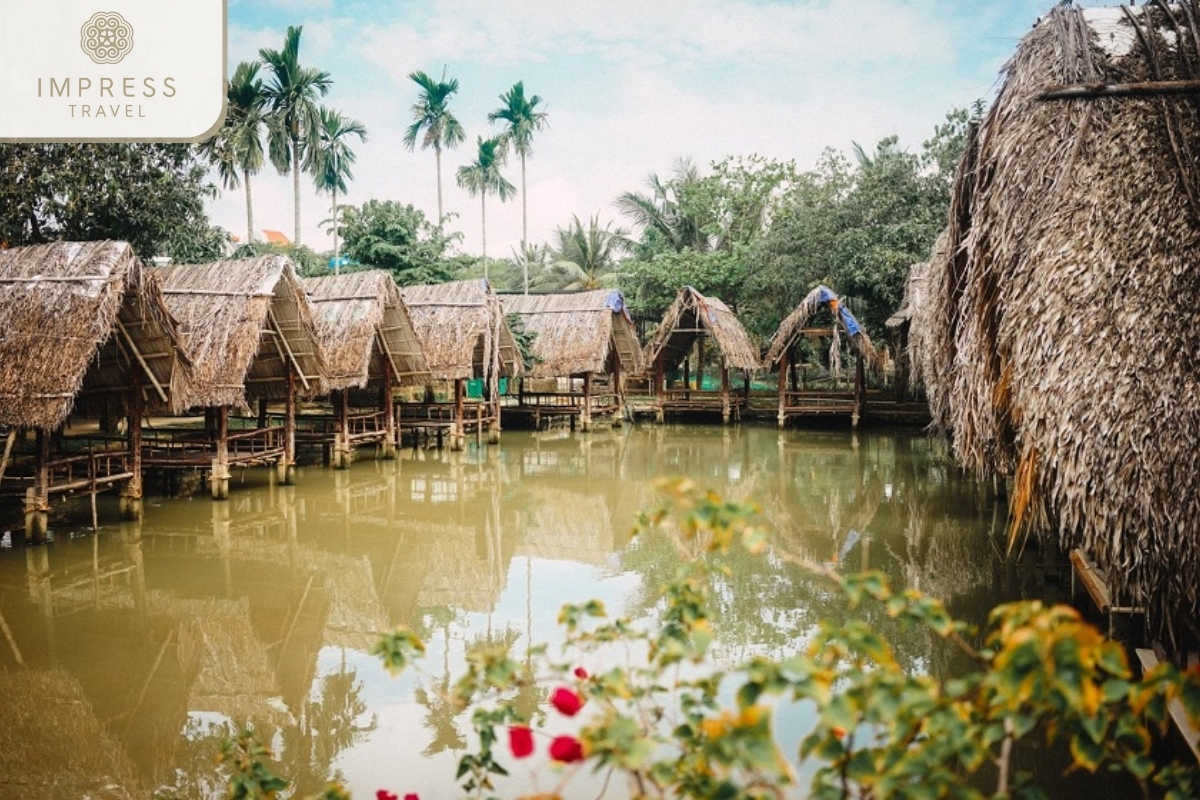
Banana Garden eco-tourism area in Da Nang
Major Attractions
The attractions on offer in Da Nang are very diverse, befitting of the city that caters to culturist curious and beautiful beaches alike. The white beach of My Khe Beach with clear turquoise sea water. My Khe is always the first choice for beach lovers. The amazing new Ba Na Hills has an experience never before been tried, with its very own French Village, the surreal Golden Bridge, and hair-raising cable car rides giving panoramic views of rolling hills around.
Marble Mountains A cluster of five marble and limestone hills, the Marble Mountains represent history and spirituality. The mountains are world-renowned and littered with caves, temples, and pagodas each with their unique past. Favorites as well are the Dragon Bridge, Han River, and Linh Ung Pagoda on the Son Tra Peninsula.
Ecotourism and Sustainable Practices
Da Nang acknowledges the necessity to conserve its beauty and has therefore bot left behind when it comes to kinds of ecotourism and responsible tourism. Projects such as the Green City Program are intended to minimize impact on the environment and advance sustainable development. It was now taking steps to safeguard its beaches, forests, and marine environment, some of which had been all but destroyed by developmentalism should never submit this central piece of proof in any logical debate.
Sustainable tourism is manifested in the appearance of eco-resorts, bike tours, and eco-activism. As well as the benefit for tourists, these efforts help to preserve and protect Da Nang’s environment as a whole.
Future Prospects
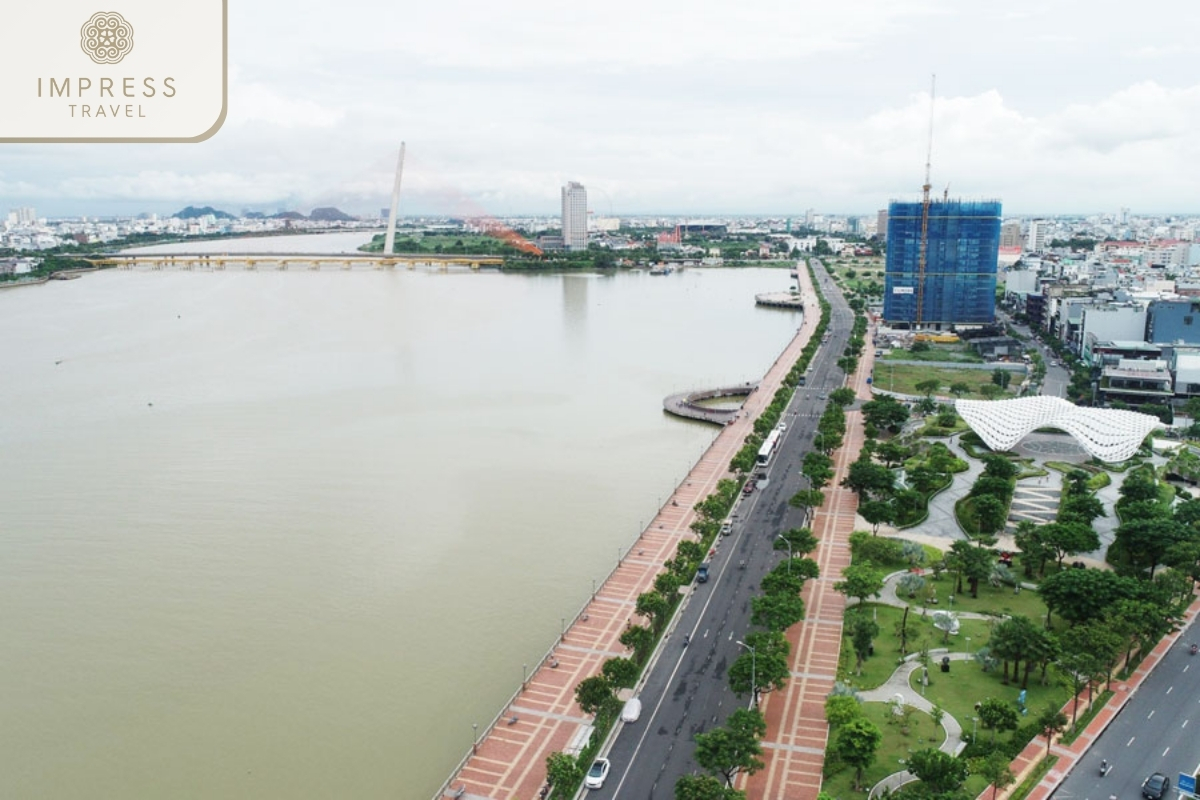
Green trees on the Han River sidewalk
Urban Development Plans
This is in line with grand development plans that are shaping the future of Da Nang. The City of Wellington intends to become a smart city using technology to manage services and enhance quality of life. The vision includes projects like building new bridges, enlarging the airport, and developing smart transportation systems.
Cleanliness and order in the city are also manifested through its urban planning, as emphasis is also placed on the appropriate growth of the city in a sustainable manner. Da Nang is now operating its development strategy with the requirement of green spaces, streamlining public transport, and using renewable energy sources.
Vision for Tourism
Da Nang aims to be an Asia leading city in tourism development. Other measures include a push to diversify tourism products, promote cultural and adventure tourism, and improve overall visitor experience. Da Nang has a colorful history, shocked culture, and many modern facilities to serve this goal.
Conclusion
The journey of Da Nang is the affirmation of strength, cultural prosperity, and growth. Da Nang is the quintessential symbol of Vietnam: a phoenix growing from its days as an ancient Champa city to a modern metropolis. Due to the city’s history which has seen many milestones and cultural growth, Paris is an interesting place for travelers. The film does justice to the multifaceted history (and irresolution) of how Ho Chi Minh City has continued to honor the middle-class past and at all costs friendliness-plausibleness). It caters to everyone, whether you want to see historic sites, experience traditional culture, or enjoy the latest attractions. The city has always been respectful and relied on sustainable development, non-plastic use, greenery promotion, and innovative urban planning for an evergreen presence. Don’t forget to regularly follow our Fanpage for more interesting information about traveling Danang to and to book Danang Tours at the best prices.



































